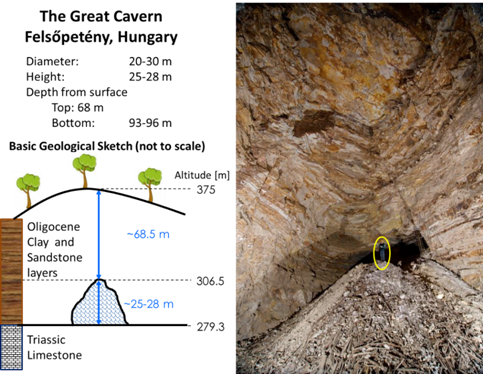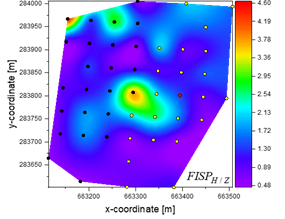Basic research
SOTÁK, Ján – ELBRA, Tiiu – PRUNER, Petr – ANTOLÍKOVÁ, Silvia – SCHNABL, Petr – BIROŇ, Adrián – KDÝR, Šimon – MILOVSKÝ, Rastislav. End-Cretaceous to middle Eocene events from the Alpine Tethys: Multi-proxy data from a reference section at Kršteňany (Western Carpathians). In Palaeogeography, Palaeoclimatology, Palaeoecology, 2021, vol. 579, art. no. 110571. doi.org/10.1016/j.palaeo.2021.110571 (IF – 3.318, JCR – Q1).
The article provides over 30 Ma record of boundary events and proxies of global environmental changes derived from the end-Cretaceous to middle Eocene formations of the Western Carpathians. This critical period after the Earth’s collision with an asteroid before 66 Ma., is indicated in more distant Tethyan realms, such as the Western Carpathians, by unconformities of sedimentary record, storm erosion, reduction of marine plankton, periods of extreme warming (55 Ma) and a gradual stabilization of climatic and biotic conditions (42 Ma). The paper introduces a first comprehensive evaluation of K / Pg boundary in the Western Carpathians, which was exactly documented by the extinction and recovery of new taxa, changes in magnetic polarity, isotope excursions, anomalous Hg concentrations, intensification of weathering evidenced by clay minerals, etc. These findings allow to present a models of changes in marine bioproductivity, climate regimes, hydrological cycles and circulation systems in the oceanic basins of the Alpine Tethys and the European epiplatform areas.
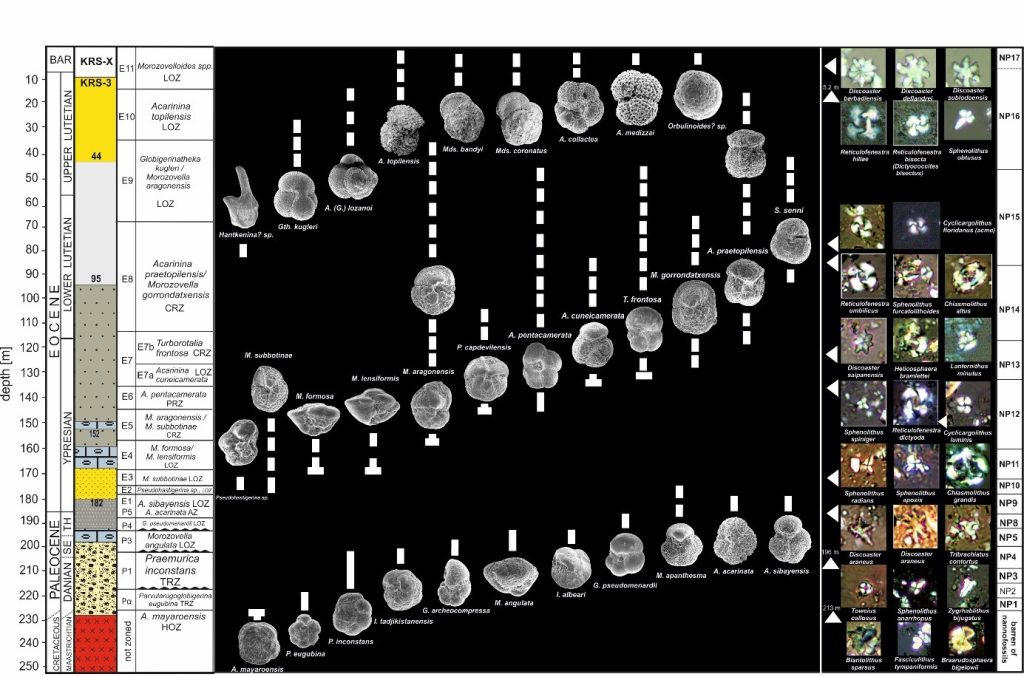
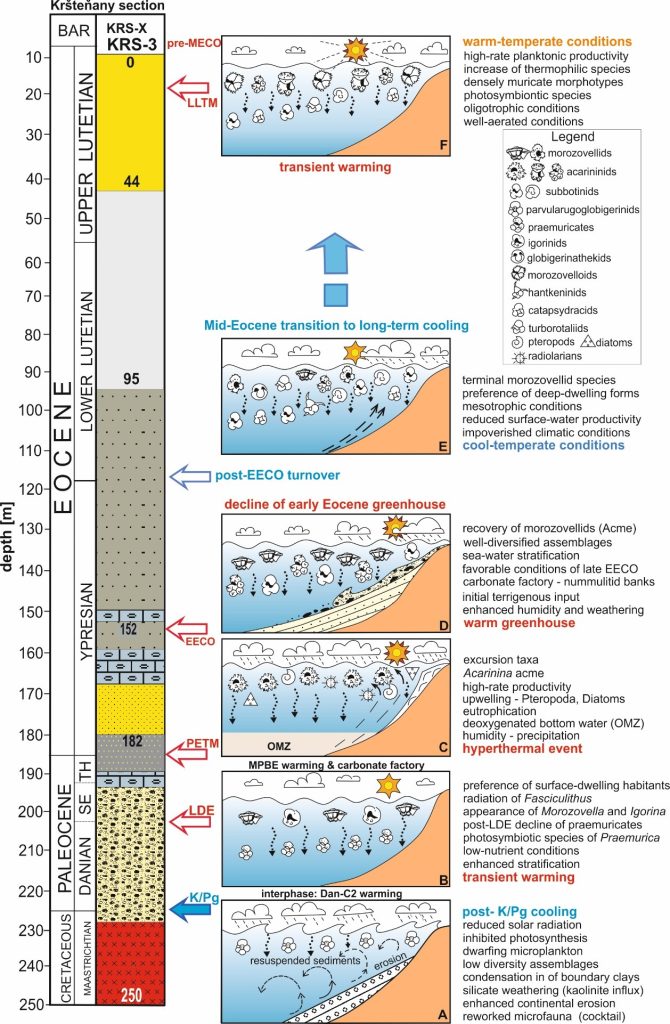
HURAI, Vratislav – BLAŽEKOVÁ, Michaela – HURAIOVÁ, Monika – SIEGFRIED, Pete – SLOBODNÍK, Marek – KONEČNÝ, Patrik. Thermobarometric and geochronologic constraints on the emplacement of the Neoproterozoic Evate carbonatite during exhumation of the Monapo granulite complex, Mozambique. In Lithos, 2021, vol. 380-381, art. no. 105883. (2020: 4.004 – IF, Q1 – JCR, 1.899 – SJR, Q1 – SJR, karentované – CCC). (2021 – Current Contents).
Evate is a carbonatite deposit situated in the Monapo granulite complex in Mozambique. The deposit is significant resource of apatite for the production of superphosphate fertilizer, as well as potential resource of graphite, molybdene, actinoides and lanthanoides. We have deciphered temperature-pressure trajectory of the metamorphic complex and a metasomatized rock (fenite) from the the carbonatite exocontact using multi-proxy approach based on thermodynamic mineral equilibria, U-Pb-Th dating and fluid inclusions in minerals. Peak metamorphic conditions in the Monapo overthrust outlier corresponded to a hot orogen (850 °C, 9 kbar). Alkalic metasomatism associated with the carbonatite intrusion occurred within the time interval between 590 and 573 Ma during retrograde conditions at 530-480 °C and 5.4-2.1 kbar. Maximum thickness of the overburden corresponded to ~20 km and this datum represents the first exact information on the burial depth of orogenic carbonatite worldwide.

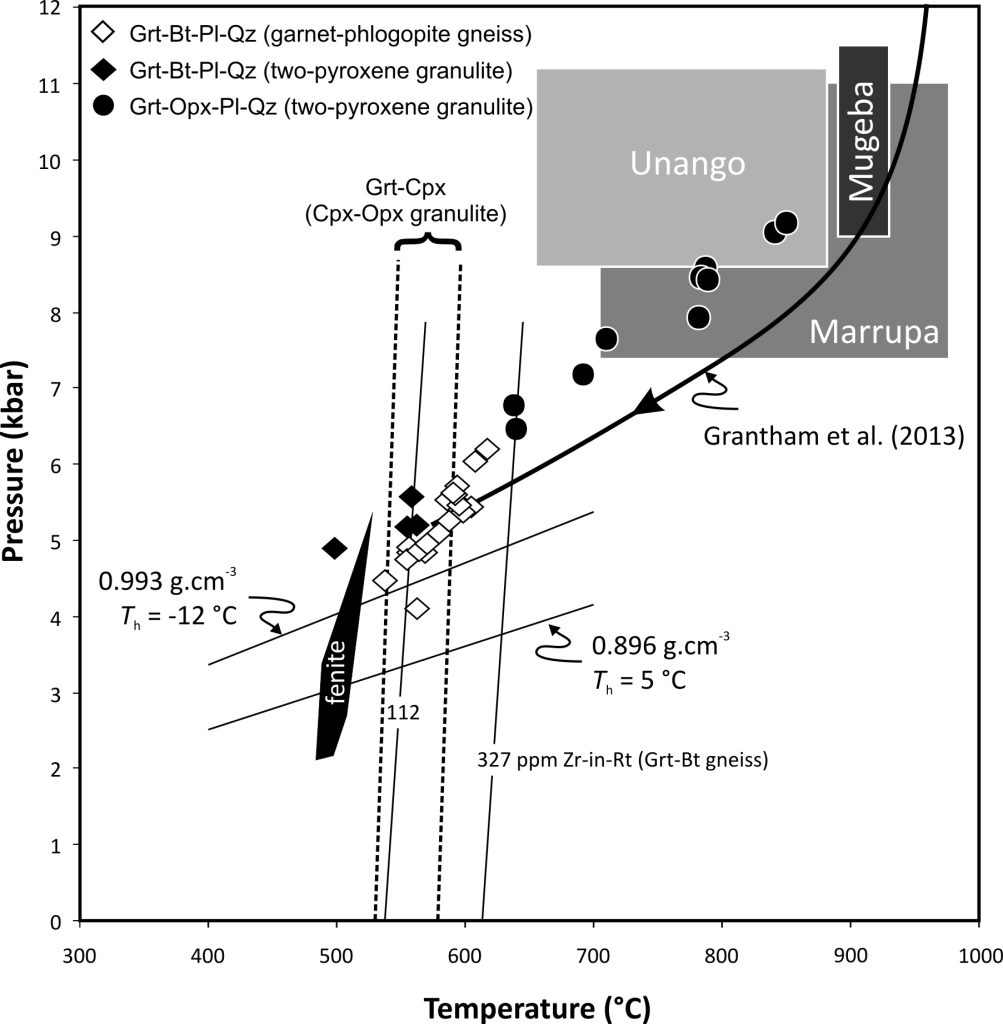
KRISTEKOVÁ, Miriam – KRISTEK, Jozef – MOCZO, Peter – LABÁK, Peter. The Finite-interval Spectral Power method for detecting underground cavities using seismic ambient noise. In Geophysical Journal International, 2021, vol. 224, issue 2, p. 945-960. (2020: 2.934 – IF, Q2 – JCR, 1.302 – SJR, Q1 – SJR, karentované – CCC). (2021 – Current Contents).
In addition to reducing geotechnical risk, the identification of underground cavities is also important for monitoring nuclear test ban violations (underground nuclear explosions). We have developed a non-invasive method for locating cavities using seismic ambient noise measurements. As a minimum, it is sufficient to use two mobile seismic stations, one at the reference point and the other measuring seismic noise in the network of points. The method is based on the calculation of the FISP (finite-interval spectral power) characteristic with the help of statistical processing of power spectral densities of noise recordings in a properly selected frequency interval. The horizontal position of the cavity can be identified by analysis of spatial anomalies of this characteristic.
Applied research
ONDERKA, Milan – PECHO, J. Sensitivity of selected summertime rainfall characteristics to pre-event atmospheric and near-surface conditions. In Atmospheric Research, 2021, vol. 259, article number 105671. (2020: 5.369 – IF, Q1 – JCR, 1.488 – SJR, Q1 – SJR, karentované – CCC). (2021 – Current Contents). ISSN 0169-8095. 10.1016/j.atmosres.2021.105671
The objective of this study was to determine the sensitivity of selected rainfall characteristics on pre-event near-surface temperature, dew point temperature and pre-event thermodynamic conditions. We observed a strong responsiveness of rainfall kinetic energy and 15-minute peak rainfall intensities to dew point temperature with a super–CC scaling (7 – 14 %K-1) when near-surface dew point temperature exceeds ~ 288 K. Dew-point temperature seems to be a physically more consistent driver of intensive precipitation than dry-bulb temperature. These findings may be useful for projections of intensive rains under the ongoing climate change.
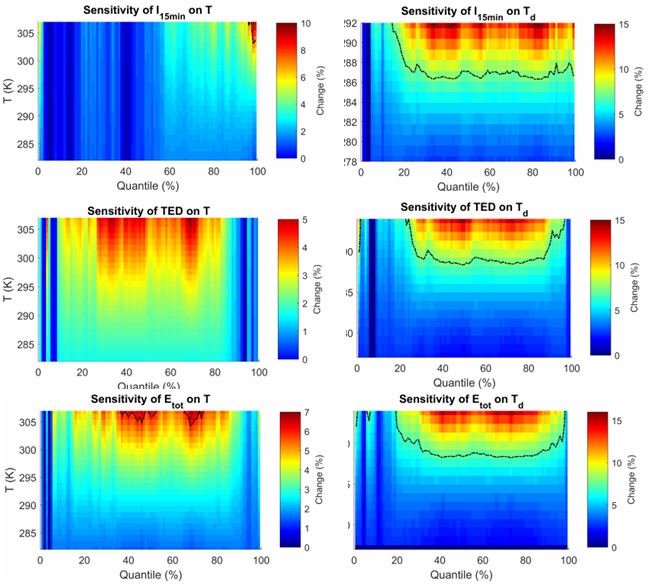
LUKASOVÁ, Veronika – ŠKVARENINOVÁ, Jana – BIČÁROVÁ, Svetlana – SITÁROVÁ, Z. – HLAVATÁ, Helena – BORSÁNYI, Peter – ŠKVARENINA, Jaroslav. Regional and altitudinal aspects in summer heatwave intensification in the Western Carpathians. In Theoretical and Applied Climatology, 2021, vol. 146, no. 3-4, p. 1111-1125.(2020: 3.179 – IF, Q2 – JCR, 0.935 – SJR, Q2 – SJR, karentované – CCC).
In our study, we observed the heatwaves (HWs) occurrence in the Western Carpathians during 1989-2018. The Carpathian Mountains are widely recognized as an important biodiversity hot-spot particularly for mountain species in Europe. Especially the endemics as autochthonous components of ecosystems are more susceptible to environmental changes, in particular climate change, which may induce the disappearance of the existing niche, they occupy. Relative threshold-based calculation of HW allowed for revealing the potential threats of this temperature extreme at the range of altitudes, including the high mountains. The trend of the heatwaves is significantly increasing in the Western Carpathians with the greatest intensification of HWs recorded in the last decade. Over the studied 30 years, the majority of the strongest heatwaves occurring across Europe hit the Western Carpathians´ region. More importantly, the area experienced the regional HWs, severity of which was comparable to those of exceptionally strong HWs, although these regional HWs were less important from the large-scale aspect. Following the coincidence between abnormally high maximum and average daily temperatures that minimize opportunities for organisms to recover, the risk of climate change–associated impacts of extreme weather on biodiversity is worsening in the Western Carpathians.
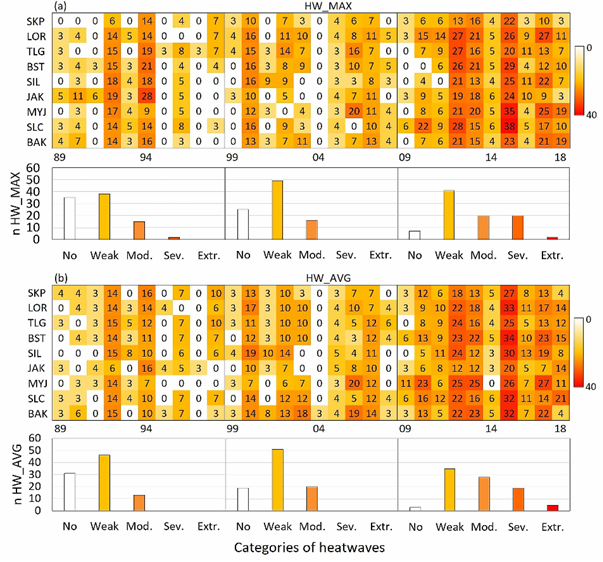
KOHÚT, Milan – WESTGATE, John A. – PEARCE, J. G. – BAČO, Pavel. The Carpathian obsidians – Contribution to their FT dating and provenance (Zemplin, Slovakia). In Journal of Archaeological Science: Reports, 2021, vol. 37, art. no. 102861. (2020: 3.216 – IF, Q1 – JCR, 1.572 – SJR, Q1 – SJR, karentované – CCC). (2021 – Current Contents).
The Carpathian obsidian samples from the Slovakian part of the Zemplín – Tokaj area have been studied by means of fission-track dating (FT) and geochemistry to better understand the provenance of the archaeological obsidians from the Central Europe realm. New FT obsidian ages are in a narrow time interval between 12.45 ±0.45 and 11.62 ±0.25 Ma, and indicate a short-time monogenic volcanic evolution rather than a long-lasting volcanism over the 16–10 Ma period, as was previously thought. Chemical composition of the Carpathian obsidians clearly exhibits a common similarity among all examined localities (Brehov, Cejkov, Hraň, and Viničky). A comprehensive provenance study, including physical properties of the obsidians, confirms a general congruence within the studied obsidians what excludes different provenance (e.g. C1a – Viničky vs. C1b – Cejkov), and the use of common provenance labelling, such as Carpathian-1 (C1) for the Slovakian – Zemplín area obsidians, is recommended.

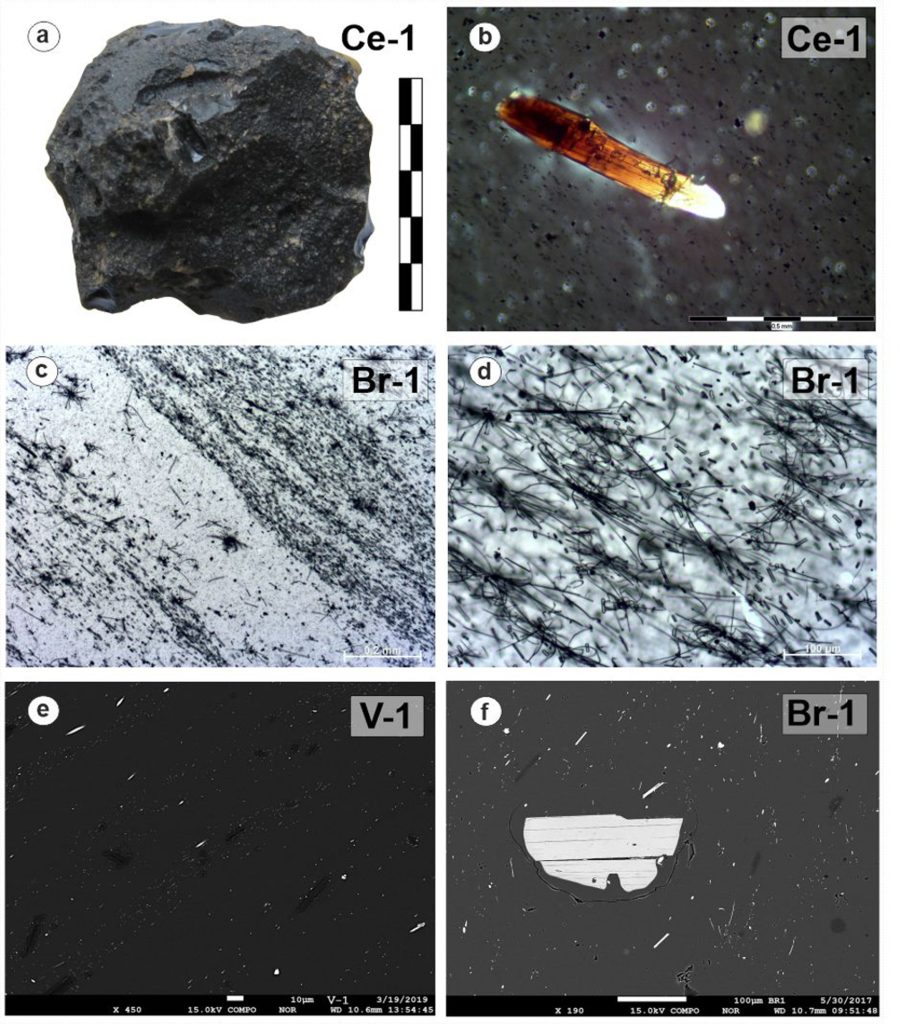

Research related to international collaboration
ZAHOREC, Pavol – PAPČO, Juraj – PAŠTEKA, Roman – BIELIK, Miroslav – BONVALOT, Sylvain – BRAITENBERG, Carla – EBBING, Jörg – GABRIEL, Gerald – GOSAR, Andrej – GRAND, Adam – GÖTZE, Hans-Jürgen** – HETÉNYI, György – HOLZRICHTER, Nils – KISSLING, Edi – MARTI, Urs – MEURERS, Bruno – MRLINA, Jan – NOGOVÁ, Ema – PASTORUTTI, Alberto – SALAUN, Corinne – SCARPONI, Matteo – SEBERA, Josef – SEOANE, Lucia – SKYBA, Peter – SŰCS, Eszter – VARGA, Matej. The first pan-Alpine surface-gravity database, a modern compilation that crosses frontiers. In Earth System Science Data, 2021, vol. 13, no. 5, p. 2165-2209. (2020: 11.333 – IF, Q1 – JCR, 4.066 – SJR, Q1 – SJR, karentované – CCC). (2021 – Current Contents).
The European AlpArray initiative, which aims to improve our understanding of the geological development of the Alps and the surrounding mountains, is a prime example of broad international cooperation. The Earth’s gravity field is an integral part of the study of the deeper structure of the Earth’s crust. A team of Slovak scientists has become a leader in creating a joint gravimetric database of ten European countries in this region. The result is the first uniform gravity map of this extent, which will be used for subsequent interpretations of the geological structure of the entire area.
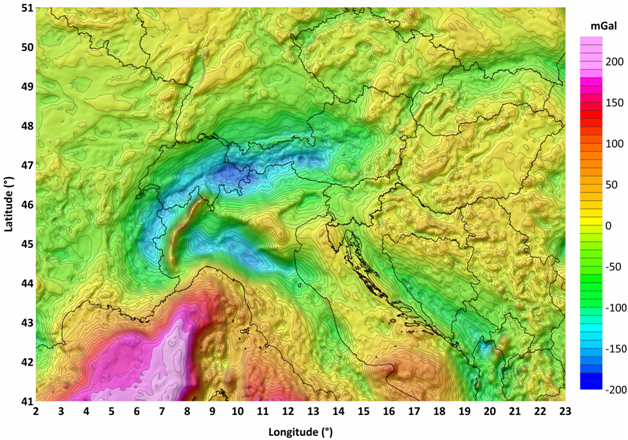
VAJDA, Peter – ZAHOREC, Pavol – MILLER, Craig A. – LE MÉVEL, Hélene – PAPČO, Juraj – CAMACHO, Antonio G. Novel treatment of the deformation–induced topographic effect for interpretation of spatiotemporal gravity changes: Laguna del Maule (Chile). In Journal of Volcanology and Geothermal Research, 2021, vol. 414, art. no. 107230. (2020: 2.789 – IF, Q2 – JCR, 1.089 – SJR, Q1 – SJR, karentované – CCC). (2021 – Current Contents).
CAMACHO, Antonio G. – VAJDA, Peter – CRAIG, Albert M. – FERNÁNDEZ, Jose**. A free-geometry geodynamic modelling of surface gravity changes using Growth-dg software. In Scientific Reports, 2021, vol. 11, p. 23442. (2020: 4.379 – IF, Q1 – JCR, 1.240 – SJR, Q1 – SJR, karentované – CCC). (2021 – Current Contents, WOS, SCOPUS).
Inversion and interpretation of spatiotemporal gravity changes
We applied inversion methodology based on the Growth approach to interpretation of spatiotemporal gravity changes observed at the Laguna del Maule volcanic field in southern Andes, Chile. We corrected the time-lapse gravity changes for the gravitational effect of the deformation of the earth surface by a new method dvelopped by us.
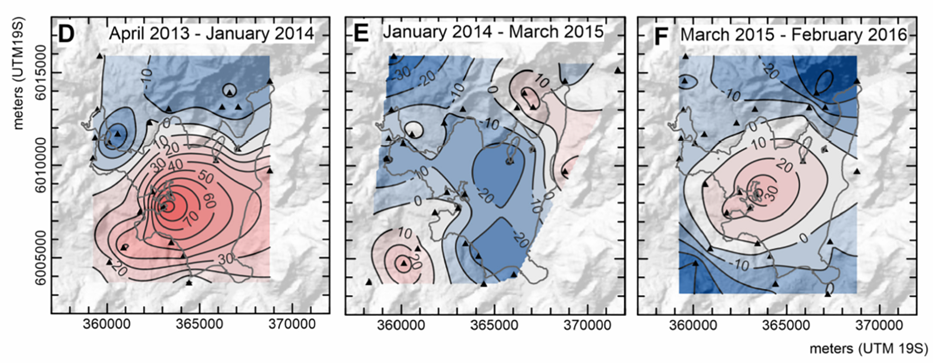
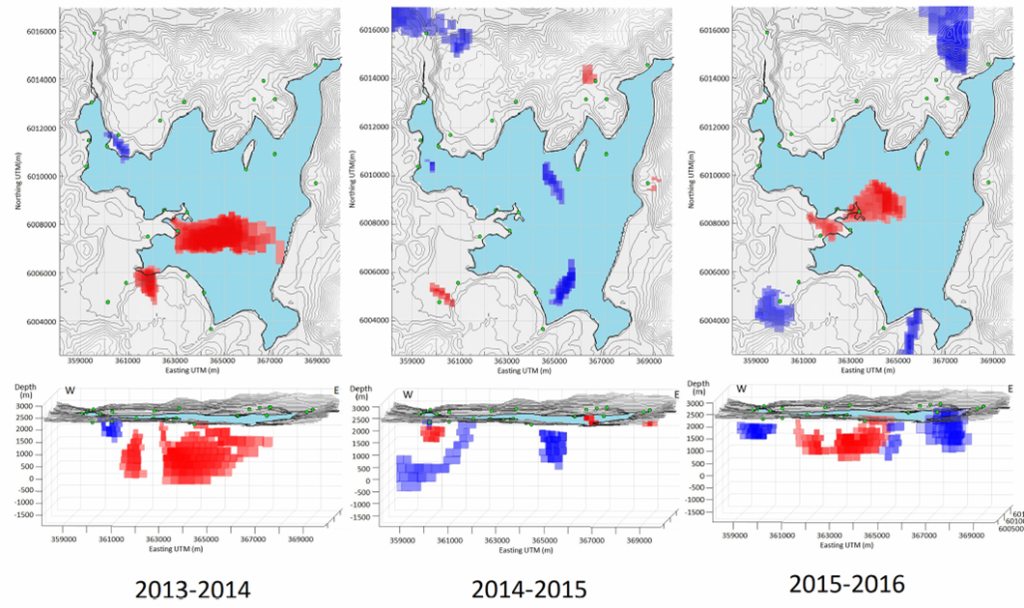
TOMAŠOVÝCH, Adam – BERENSMEIER, Michaela – GALLMETZER, Ivo – HASELMAIR, Alexandra – ZUSCHIN, Martin. Pyrite-lined shells as indicators of inefficient bioirrigation in the Holocene-Anthropocene stratigraphic record. In Biogeosciences, 2021, vol. 18, no. 22, p. 5929-5965. (2020: 4.295 – IF, Q1 – JCR, 1.744 – SJR, Q1 – SJR, karentované – CCC). (2021 – Current Contents).
On the basis of preservation and geochronological dating of molluscan shells in sedimentary cores collected in the northern Adriatic Sea, we have found that during the 20th century, the frequency of dead shells coated by framboidal pyrite (up to 40-50% of the total molluscan assemblage in individual sedimentary increments, Fig. 1). Pyrite-lined shells are rare (less than 10-20%) in sediments that were deposited prior to the 20th century. The geochronological dating of shells demonstrates also that framboidal pyrite that lines shells was formed under reducing conditions during the decomposition of organic matter very rapidly within shells – after a few years – after the death of molluscs. Our hypothesis is that these changes in shell preservation and in the frequency of pyrite-lined shells reflect a decline in the depth of the oxycline in sediments. This change coincides with the eutrophication that occurred in the northern Adriatic during the second half of the 20th century.

Monographs
VRŠANSKÝ, Peter. Cockroaches from Jurassic sediments of the Bakhar Formation in Mongolia. 1. Edition. Cham : Springer, 2020. 98 p. ISBN 978-3-030-59406-0
The first book ever available on fossil cockroaches. Includes a comparison of all major Jurassic cockroach assemblages. Investigates a key Jurassic fossil site Bakhar, Mongolia, revealing the impressive diversity. Provides essential information with more than a thousand specimens with 32 new species (of a total of 300 Jurassic worldwide). It is the first that contains information on the variability of any Upper Jurassic organism, suggesting that the ecological conditions were optimal – an unbiased counterpart to the extensively studied Daohugou in China. It is useful in the mining industry, as the strata contain strategic coal (and other materials).




